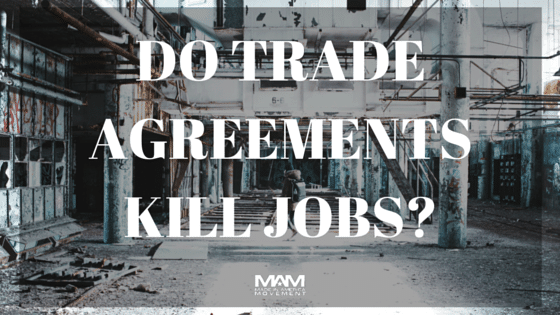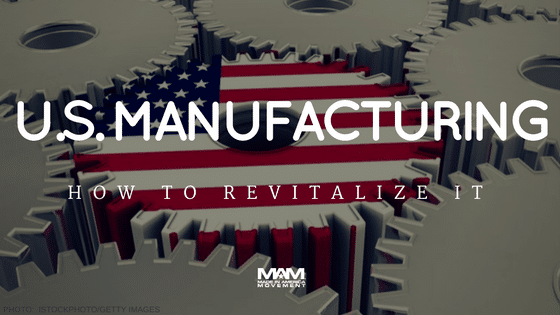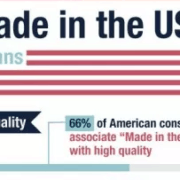Do Trade Agreements Kill Jobs?
International trade agreements: It is remarkable that the one thing leading presidential candidates of both parties agree is bad is the one thing mainstream economists agree is good.
Donald Trump says he’ll scrap them and impose tariffs. Ted Cruz opposes even negotiating them. Bernie Sanders repeatedly condemns them. Hillary Clinton says she didn’t support them.
The presidential candidates are seemingly at odds with a fundamental principle of mainstream economic theory: the benefits of free trade.
Yet economic theory is no match for social reality. Politicians and voters are responding to the obvious loss of manufacturing. They can see that factories are closed, jobs are lost, and even entire industries that were invented in this country have disappeared and whole regions have been devastated. The rust belt is not just an economic model. The record shows that trade agreements like NAFTA were launched with an explicit promise of creating jobs. Instead hundreds of thousands of jobs evaporated.
What went wrong?
Economists In Denial
Economists at the liberal-leaning Economic Policy Institute have long pointed to the negative effects of free trade, with massive loss of jobs to Mexico and China.
Yet conservative-leaning economists have questioned this interpretation of the evidence. “Imports mean lost jobs only if we pretend we can make here all the things we import, the same way and for the same price,” Derek M. Scissors, a resident scholar at the American Enterprise Institute, told the Washington Post. “We could just build all the flat-screen TV’s here; the price wouldn’t soar, demand wouldn’t plummet, the industry wouldn’t contract sharply, and all those jobs would somehow be preserved, even though they’d cost 7 times as much per worker here as in China.”
Mainstream Economics: There Is A Problem
Now some mainstream economists are beginning to agree that there is a problem. Celebrated labor economists David Autor, David Dorn and Gordon Hanson, have just published a study, “The China Shock: Learning from Labor Market Adjustment to Large Changes in Trade.” It shows that increased trade with China caused severe and permanent harm to many American workers:
“Adjustment in local labor markets is remarkably slow, with wages and labor-force participation rates remaining depressed and unemployment rates remaining elevated for at least a full decade after the China trade shock commences. Exposed workers experience greater job churning and reduced lifetime income. At the national level, employment has fallen in U.S. industries more exposed to import competition…but offsetting employment gains in other industries have yet to materialize.”
The study shows that the affected industries and regions “have been hit hard and have not recovered. Workers in these industries and regions don’t go on to better jobs, or even similar jobs in different industries. Instead, they shuffle from low-paid job to low-paid job, never recovering the prosperity they had before Chinese competition hit. Many of them end up on welfare. This is very different from earlier decades, when workers who lost their jobs to import competition usually went into higher-productivity industries, to the benefit of almost everyone.”
The study criticizes fellow economists for relying too much on theory, and not enough on evidence:
“We argue that having failed to anticipate how significant the dislocations from trade might be, it is incumbent on the economics literature to more convincingly estimate gains from trade, such that the case for free trade is not based on theory alone, but on a foundation of evidence.”
Autor and his fellow authors are suggesting that something else must be going on. But what?
An Alternative Explanation: Loss Of U.S. Competitiveness
One obvious hypothesis is that documented by another part of mainstream academia: Harvard Business School. It’s a report that was written by three distinguished professors—Michael Porter, Jan Rivkin and Rosabeth Moss Kanter—as part of an initiative begun in 2011. Their thesis is that America has been losing the ability to compete in the international marketplace.
“There was a clear feeling that something different was happening in the U.S. economy,” Professor Porter explains. “Virtually all the net new jobs created over the last decade were in local businesses—government, healthcare, retailing—not exposed to international competition. That was a sign that the U.S. businesses were losing the ability compete internationally.”
The report shows how it happened. “The basic narrative begins in the late 1970s and the 1980s. Through globalization, it became possible and attractive for firms to do business in, to, and from far more countries. Changes in corporate governance and compensation caused U.S. managers to adopt an approach to management that focused attention on the stock price and short-term performance.”
As a result, “firms invested less in shared resources such as pools of skilled labor, supplier networks, an educated populace, and the physical and technical infrastructure on which U.S. competitiveness ultimately depends.”
These management actions in turn gave rise to “serious social problems (loss of jobs, stagnating income, growing inequality) and eventually a decline of the public sector (an inability to fund health and pensions, or investments in ‘the commons’ such as infrastructure, training, education, and basic research, fields that the private sector had abandoned.)”
Why Did Short-Termism Emerge?
Why the focus on the short-term and the stock price? In the 1970s and 1980s, public corporations began adopting a notion that even Jack Welch has called “the dumbest idea in the world.” In an effort to deal with the pressures of globalization, deregulation and new technology, these companies embraced the notion that the very purpose of a corporation is to create shareholder value as reflected in the current stock price. Their focus turned inward towards making money for the shareholders and the executives as the primary goal.
The practices that emerged, such as a focus on quarterly profits and the current stock price, along with massive share buybacks—some $3.4 trillion over the last ten years— created the appearance that the company was doing well. It was (and is), in effect, illegal stock price manipulation. Yet everyone climbed on board: business execs, boards of directors, Wall Street, brokers, regulators, politicians, and investors.
Companies scrambled to find ways to keep their current share price rising, by whatever means necessary. One of those ways was off-shoring.
A Lemming-Like March To China
Whole industries were shipped overseas in pursuit of apparent short-term cost savings. There was a lemming-like march towards off-shoring.
“The decision to go to China,” one Fortune 500 executive said to me, “was driven almost exclusively by the analysts, who told management they couldn’t support a buy recommendation if the company had no plans to be in China. Since the executives who make the decision are compensated with hefty stock options, it wasn’t long before corporate was offering Mandarin lessons. I think these people understand the long term implications of these decisions perfectly well, and they’re very sympathetic to the poor b—-ds who will come after them and have to sort this mess out – after those options have been exercised, of course.
“The unholy alliance between the analyst community and executives heavily incentivized by stock options – given cover by the simplistic apologia of cost accountants who coo about labor savings in China but forget about the six-figure travel expenses – helps explain why manufacturing has left.”
Firms Didn’t Do The Math
“Many companies that off-shored manufacturing didn’t really do the math,” says Harry Moser, an MIT-trained engineer and founder of the Reshoring Initiative. “A study the consulting company, Archstone, showed that 60% of offshoring decisions used only rudimentary cost calculations, maybe just price or labor costs rather than something holistic like total cost. Most of the true risks and cost of offshoring were hidden.”
Why did so many very smart highly educated people make the same mistake? It wasn’t lack of mathematical capability. Their decision-making was driven by “the world’s dumbest idea” and the rush to generate short-term profits, or at least appear to be generating short-term profits.
A contributing factor was the belief that offshoring manufacturing to emerging markets would result in fewer of the labor problems that were emerging because of the top-down bureaucracy in U.S. firms. By offshoring production, firms were not only seeking to lower their production costs. They were also trying checkmate unions by removing jobs from this country, without thought to long-term consequences of large numbers of firms shipped jobs out of the country. The considerations caused even highly educated people to ignore the cliff they were driving over.
The Loss Of Whole Industries
Decades of such decision-making across multiple industries have led to massive outsourcing of manufacturing and left U.S. industry, thereby limiting the capability to invent or manufacture the next generation of high-tech products that are key to growing the economy, as noted by Gary Pisano and Willy Shih in their classic article, Restoring American Competitiveness. For instance, Amazon’s Kindle couldn’t be made in the U.S., even if Amazon wanted to.
“So the decline of manufacturing in a region sets off a chain reaction,” say Pisano and Shih. “Once manufacturing is outsourced, process-engineering expertise can’t be maintained, since it depends on daily interactions with manufacturing. Without process-engineering capabilities, companies find it increasingly difficult to conduct advanced research on next-generation process technologies. Without the ability to develop such new processes, they find they can no longer develop new products. In the long term, then, an economy that lacks an infrastructure for advanced process engineering and manufacturing will lose its ability to innovate.”
Pisano and Shih have a frighteningly long list of industries that are “already lost” to the USA:
“Fabless chips”; compact fluorescent lighting; LCDs for monitors, TVs and handheld devices like mobile phones; electrophoretic displays; lithium ion, lithium polymer and NiMH batteries; advanced rechargeable batteries for hybrid vehicles; crystalline and polycrystalline silicon solar cells, inverters and power semiconductors for solar panels; desktop, notebook and netbook PCs; low-end servers; hard-disk drives; consumer networking gear such as routers, access points, and home set-top boxes; advanced composite used in sporting goods and other consumer gear; advanced ceramics and integrated circuit packaging.”
Their list of industries “at risk” is even longer and more worrisome.
The widely-accepted implication that trade agreements or Wall Street “made” firms outsource manufacturing is wrong. What led to this behavior is ‘the world’s dumbest idea’: the notion that the very purpose of a firm is to maximize shareholder value as reflected in its stock price.
If these managements had thought more carefully, they would have realized that they were steadily losing expertise to run and grow the business in the future.
What’s To Be Done?
What’s to be done? Railing against international trade agreements isn’t going to solve the problem. Nor does it lie in constructing more elaborate economic models. It lies in rethinking how business is being conducted.
A good starting point is Albert Einstein’s insight: “The significant problems that we have cannot be solved at the same level of thinking with which we created them.”
We can learn from firms that have taken a different path. They have committed themselves to entrepreneurship and innovation. They have recognized that power in the marketplace has shifted from seller to buyer. These firms have seen that “better, cheaper, faster, smaller, more convenient, and more personalized” is the new norm, and the ability to innovate with committed employees is critical. These firms aim to generate an entrepreneurial spirit throughout the entire organization.
Even better news: Firms that embrace entrepreneurship and innovation are competitive internationally and are handsomely rewarded by their customers and the stock market for doing so. The combined market capitalization of four firms alone—Apple, Amazon, Facebook and Google—now amounts to around $1.3 trillion.
As a result, every aspect of business is changing. “Smartphones and tablets,” writes economist Geoffrey Moore, “are reengineering whole swaths of the consumer economy, from information access (Google) to communication (Facebook and Twitter) to media and entertainment (YouTube) to transportation (Uber) to hospitality (Airbnb) to dining (OpenTable and Yelp), and beyond. And in the process, they are also reengineering us, as anyone with a child or grandchild under the age of six can testify.”
And it’s not just firms in the digital economy. Whole Foods, Starbucks, Costco and Zara are using the same management practices in the non-digital world.
“Traditional, MBA-style thinking,” as Eric Schmidt and Jonathan Rosenberg write in their book, How Google Works, “dictates that you build up a sustainable competitive advantage over rivals and then close the fortress and defend it with boiling oil and flaming arrows.” That doesn’t work anymore, because competitive advantages are less and less sustainable. The firm has to go on innovating, in order to be continuously successful.
It’s time to stop railing at international trade agreements and get to the cause of loss of jobs: it’s the way public companies are being run. They need to abandon ‘the world’s dumbest idea’ and adopt the Agile management practices that generate continuous innovation.
SOURCE: Forbes









Leave a Reply
Want to join the discussion?Feel free to contribute!